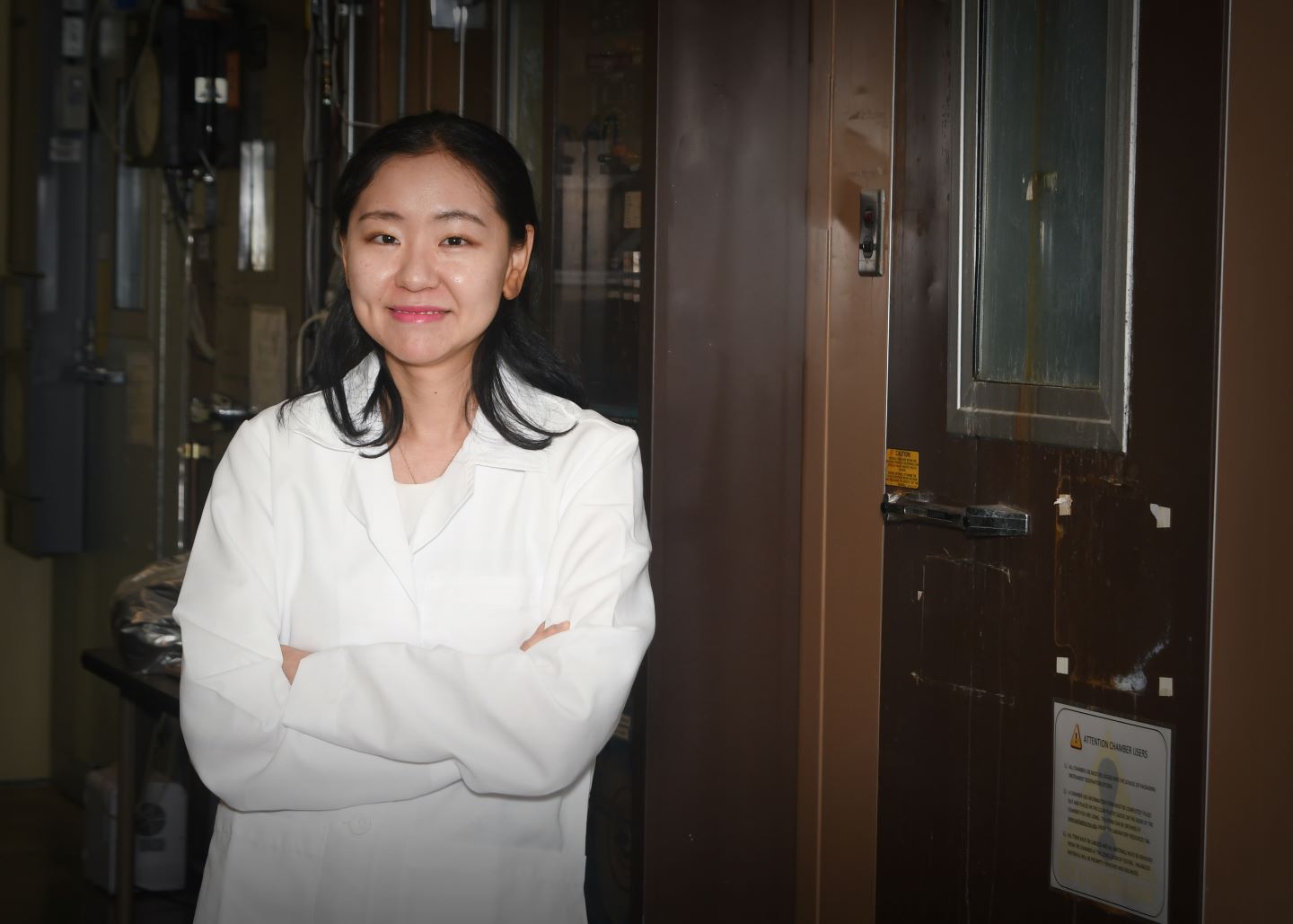Flexible plastic packaging is everywhere.
It covers ground beef and chicken legs at grocery stores. It holds chips and cookies in sandwich bags placed in children’s lunchboxes. And it stores applesauce and yogurt in ready-to-eat pouches and tubes.
The problem is that flexible plastic eventually sits in a landfill or worse, ends up in a river, lake or ocean. Plastics degrade into tiny debris known as microplastics, about the size of a pencil eraser. These microplastics end up in our drinking water, in the food we eat and even in the air itself. While much remains unknown about microplastics, one thing is certain – it’s everywhere, and it’s not going away.

Yoorae Noh, a new assistant professor in MSU’s School of Packaging, is determined to understand how flexible packaging degrades. She came to MSU last fall with the goal of researching how microplastics interact with pathogenic bacteria, heavy metals and other organic compounds in our water systems.
This fall, Noh’s lab will begin researching how flexible packaging breaks down into microplastics. She is focusing on the degradation dynamics, with a particular focus on the diversity of packaging materials and additive compositions. Later, she plans to make a laboratory-scale water system and study what happens when the packaging-derived microplastics are added.
Noh also hopes to collaborate with MSU water researchers, especially experts in heavy metals. Together, she wants to write a proposal for in-depth research on microplastics in the water system. She’s looking forward to the chance to work within the Water Alliance and meet potential collaborators.
“Microplastics and packaging residues in aquatic ecosystems are emerging as a growing but unresolved problem. I think bringing this critical topic here can be a key way I can contribute within the Water Alliance,” Noh said.
Noh comes to the School of Packaging with a background in civil engineering. Her interest in plastic packaging and microplastics was a long journey, she said. It began as she pursued her master’s degree at Yonsei University in South Korea, where she focused her studies on the interaction between pathogenic bacteria and the plastic in plumbing systems.
Later, during her doctoral studies at Purdue University, she shifted her focus to air quality contamination resulting from cured-in-place-pipe (CIPP) lining, i.e., the plastic liner installation. CIPP lining is used to repair existing piping, but during the in-situ manufacturing, it releases a white plume of gases that include microplastics and nanoplastics, which are even smaller than microplastics. The experience sparked her interest in how plastics impact the fundamental elements of human life – air and water.
“During my academic journey, I recognized that there’s a huge issue in how plastic is handled,” Noh said. “The packaging sector is the largest producer of plastic and alsolargest generator of plastic waste. That’s why I applied for the position at MSU.”
Microplastics are still largely uncharted territory. Over the last decade, scientists have sounded the alarm as the tiny plastic particles have been found in water, food and even our bodies. The debris is small enough to easily slip through filters, and nanoplastics are so tiny that they can even pass through cell walls. Because the most of plastic are not biodegradable, microplastics that are ingested can bioaccumulate.
Scientists are only beginning to understand how microplastics affect human health. As the microplastics build up in the human body, they can have a negative impact on our immune systems and change metabolism, Noh said. They can also absorb and concentrate toxic persistent organic compounds and heavy metals that are ingested, increasing their toxicity.
Noh is at the start of her research in microplastics, but she’s looking forward to having data to share later this year. She’s passionate about not only reducing waste, but also contributing to the still-developing science of microplastics and their impact on humans, marine organisms and the planet.
This story originally appeared on the Office of Research and Innovation website.